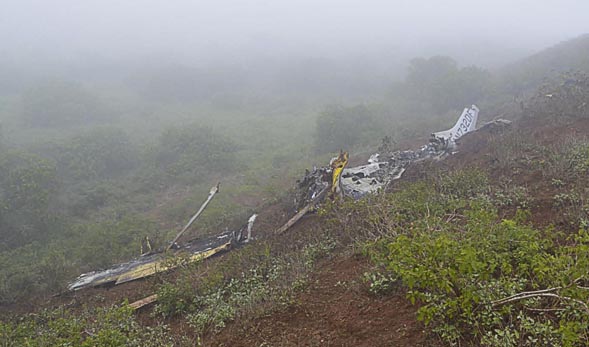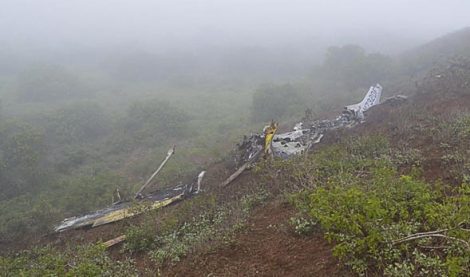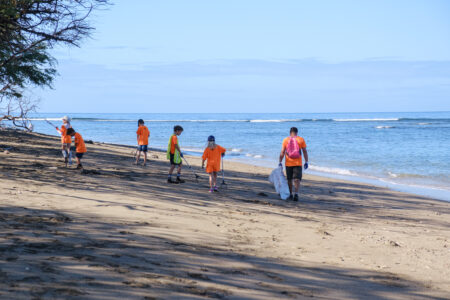NTSB: Pilot error was likely cause of Molokai plane crash

Bill and Lynn Vogt were killed when their single-engine plane crashed into a mountainous area on Molokai Ranch land near the Molokai Airport. The NTSB has determined pilot error the likely cause of the 2017 crash. Maui Police Department photo
Pilot Bill Vogt’s decision to fly under visual flight rules into an area of clouds and rain that required instrument flight on approach to Molokai Airport is the probable cause of the crash that killed him and his wife on Dec. 10, 2017, the National Transportation Safety Board reported Monday.
The poor weather led to “a loss of visual reference and subsequent controlled flight into terrain,” the report said. The NTSB indicated that the pilot was caught between visual and instrument flight rules and had requested an instrument approach to the airport while also noting that he was “right on the edge” of visual flight and had “pretty good visibility.”
The single-engine, wheel-equipped Textron Aviation aircraft crashed into remote mountainous terrain at an elevation of about 1,300 feet about 3.35 miles southwest of the airport, the report said. The crash killed Bill and Lynn Vogt, 78 and 74 years old respectively, who were headed home to Molokai from Oahu after an out-of-state trip.
While the plane was destroyed by fire, an examination of the frame and engine revealed no evidence of mechanical problems, the NTSB said.
An autopsy of the pilot indicated that he had severe heart disease, which would have put him at risk of chest pain, palpitations, shortness of breath and fainting, the NTSB said. However, his communications with the air traffic controller and flight track information indicate that “he was actively maneuvering the airplane, likely to avoid clouds and attempt to remain in visual conditions” before the crash.
“Thus, it is unlikely that symptoms from the heart disease contributed to the accident,” the NTSB said.
There is no evidence to suggest that Vogt, who was instrument rated, obtained a weather briefing before departing Daniel K. Inouye International Airport at about 10:30 a.m. NTSB reports said.
At 10:55 a.m. that day, weather reports indicated 4 miles of visibility with light rain and mist, a cloud ceiling of 1,400 feet with a broken cloud layer of 3,300 feet. The controller provided Vogt with vectors for the approach to the airport and advised him to stay on visual flight rules, which he acknowledged.
About four minutes later, the controller advised Vogt that he was south of the final approach course. The pilot said he was correcting and was “right on the edge” of visual flight rules but had “pretty good visibility.” That was the last contact between the controller and the pilot. Radar contact was lost shortly after, the report said.
Vogt’s instrument flying experience could not be determined. The flight instructor who conducted Vogt’s most recent flight review, about eight months before the crash, did not endorse him for instrument flight, the report said.
Maintenance records for the aircraft, built in 1978, were not available to the NTSB. Manufacturer and airworthiness information for the plane showed that it was equipped for instrument flight but whether the system had been certified could not be determined, the earlier factual report said.
Bill Vogt was listed as the registered owner.
* Lee Imada can be reached at leeimada@mauinews.com.
- Bill and Lynn Vogt were killed when their single-engine plane crashed into a mountainous area on Molokai Ranch land near the Molokai Airport. The NTSB has determined pilot error the likely cause of the 2017 crash. Maui Police Department photo


